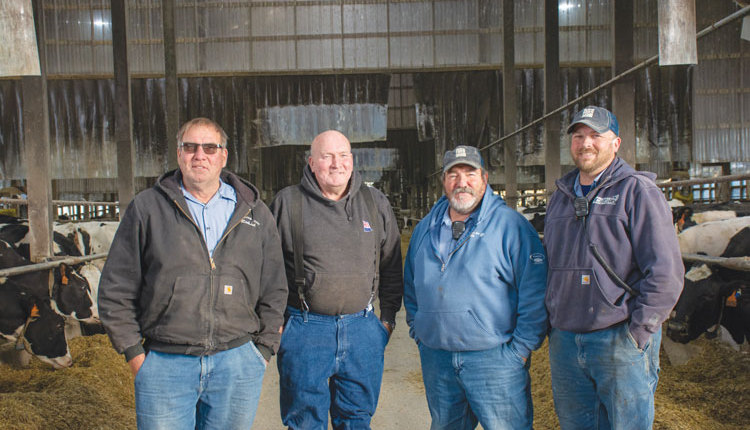The author is the managing director for Farmers for Sustainable Food.

A mid growing interest in the source of food and how it is produced, customers are seeking information about the sustainability of what they eat and drink. Adding to that, the flurry of activity around environmental, social, and governance is causing supply chains to scramble to make commitments and prove they are taking action.
Part of taking action is gathering data so companies can prove they are making progress. Food companies have access to their own information about how they process products, but they also need to get data from the source of their raw materials — farmers.
A framework to follow
Many farmers are already using data to better manage their businesses. On the animal side, it might be measuring milk production and components, weights, feed quality, and genetic information. On the crop side, you might use GPS and sensing technology, soil tests, and yield data. This is also common when it comes to farm financials. While you may not be collecting exactly what will be requested from a food company, you already use data to make management decisions, and there is opportunity to do the same with sustainability data.
Farmers for Sustainable Food (FSF) is a collaborative, industry-supported effort to promote and support farmer-led solutions to today’s environmental challenges. We support farmer-led conservation groups as well as supply chain sustainability projects with a regional focus in the Upper Midwest. FSF provides administration, communications, events, strategy, technical expertise, and funding for six farmer-led groups and sustainability project coordination and management.
We help farmers gather data on their environmental impact regarding crop production and land management through several avenues. One way is through a simple conservation practice survey, supported by our partners at The Nature Conservancy, that aggregates information about what farmers in farmer-led conservation groups are doing on the land and models the impact they are having on phosphorus savings and sediment erosion.
Another avenue is through sustainability projects. Farmers and their partners can access FSF’s Framework for Farm-level Sustainability Projects. This is an easy-to-use handbook that helps farmers determine which conservation practices are most effective for their individual farms by equipping them with the tools necessary to document the environmental and financial effects of conservation practices. The framework is designed to be flexible, so it can be replicated for projects elsewhere. It’s free to use and available at FarmersForSustainableFood.com.
The guide covers four areas of consideration for establishing and executing farmer-centric sustainability projects:
1. Engagement
2. Formation
3. Operation
4. Conclusion
Focus areas can be both environmental and financial. It also suggests tools that farmers and their partners can use in their projects.
Tracking progress
Starting in 2019, this framework was put to the test through a three-year pilot project in southwestern Wisconsin, and three more projects launched in 2021.
Through the pilot project, farmers completed financial and environmental analyses to develop benchmarks. Financial baselines were set to evaluate return on investment (ROI) year-over-year, and farmers determined what conservation practices worked best for their farm.
The project received the “Outstanding Supply Chain Collaboration” award from the Innovation Center for U.S. Dairy in 2021 and is now being duplicated by other farmer-led groups and food companies.
One tool being used in FSF-supported sustainability projects that is available to any farmer is Field to Market’s Fieldprint Platform. The platform is a pioneering assessment framework that empowers brands, retailers, suppliers, and farmers at every stage in their sustainability journey to measure the environmental impacts of commodity crop production and identify opportunities for continuous improvement.
Farmers can access this free and confidential tool through the online Fieldprint Calculator or through associated farm-management software that integrates the platform’s metrics and algorithms into the tools that farmers are already using. Brands, retailers, and suppliers can then access aggregated data from farmers who opt to participate in Continuous Improvement Projects.
Farmers get scores about each field they enter data on, as well as aggregate scores in eight areas of sustainability: biodiversity, energy use, greenhouse gas emissions, irrigated water use, land use, soil carbon, soil conservation, and water quality. This data helps farmers make management decisions to improve their field activities as well as share their sustainability story downstream to the customers of their products.
Seize the opportunity
This is just one option available for data collection. Recognizing there are many categories for continuous improvement, there is also still a need to improve the collection and management of all this data to make it easier to use and understand. Various programs and platforms, plus the time needed to enter the information, can make it a challenge to use the information to its fullest potential. The good news is there are companies working on programs to put the data into a dashboard. Also, don’t be afraid to look for support from technical experts in the environmental or financial space to support you in your collection and analysis.
Sustainability is a journey and it takes a team of people over time to navigate it. Reach out to trusted advisers for support and make a commitment for several years to use a tool before you can determine the value and your progress. One year of data and information is not enough to understand trends.
This work must be done collectively and all parties have a role to play. Let’s view this interest in food and farming practices as an opportunity rather than a threat and make our data work for us, both in farm management and for our customers. It’s never too late to start.
This article appeared in the February 2022 issue of Journal of Nutrient Management on pages 10 and 11. Not a subscriber? Click to get the print magazine.


